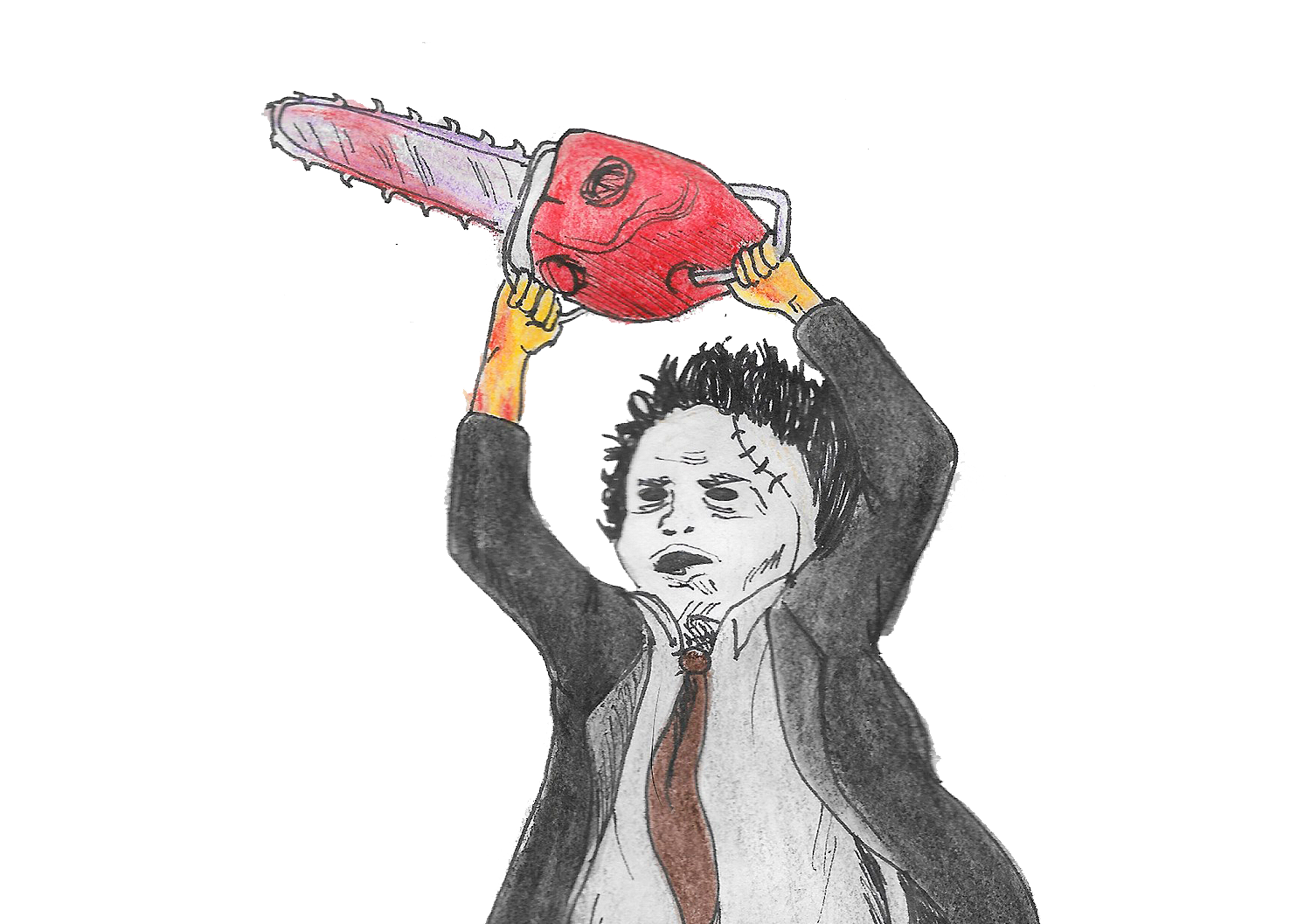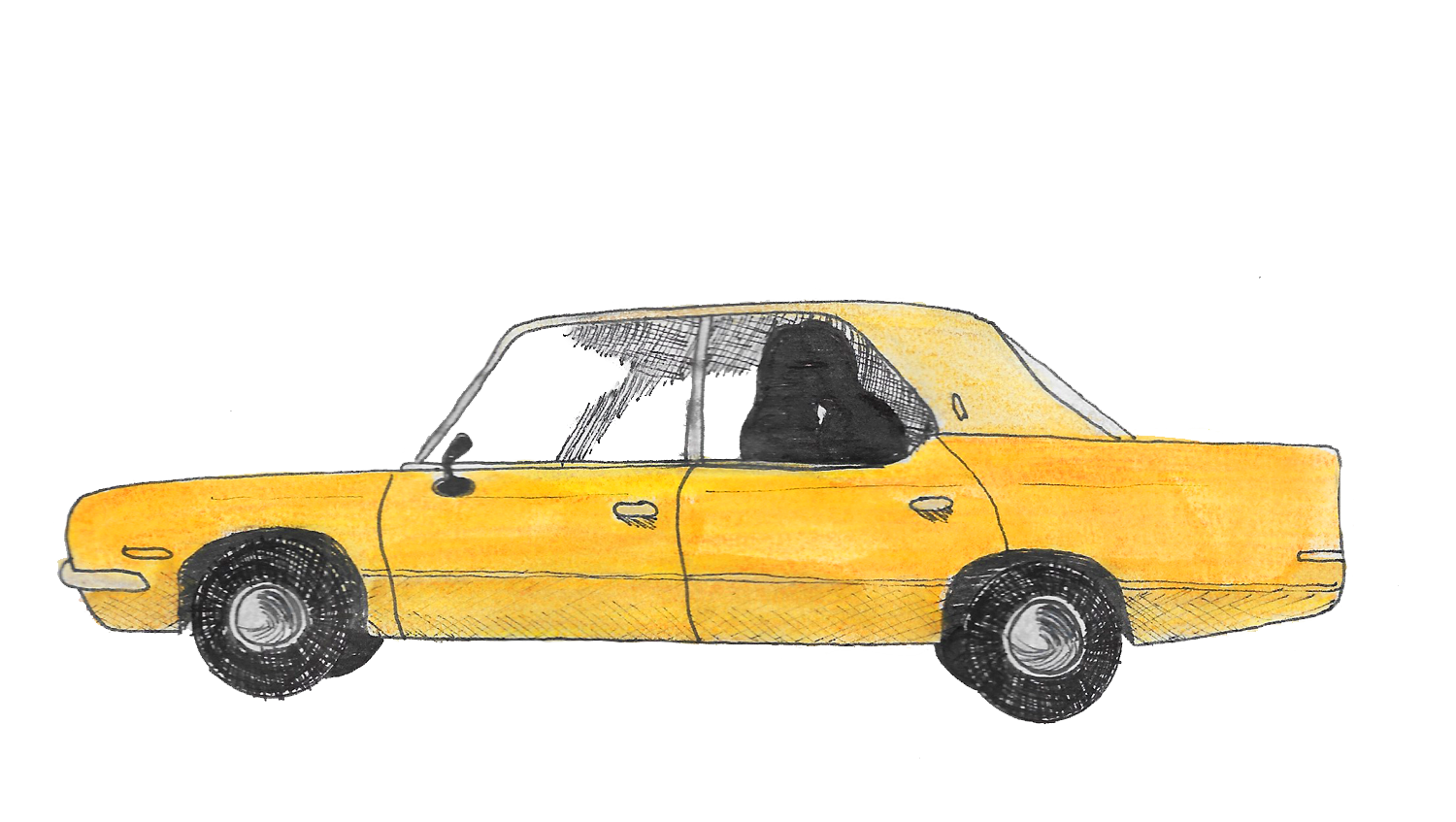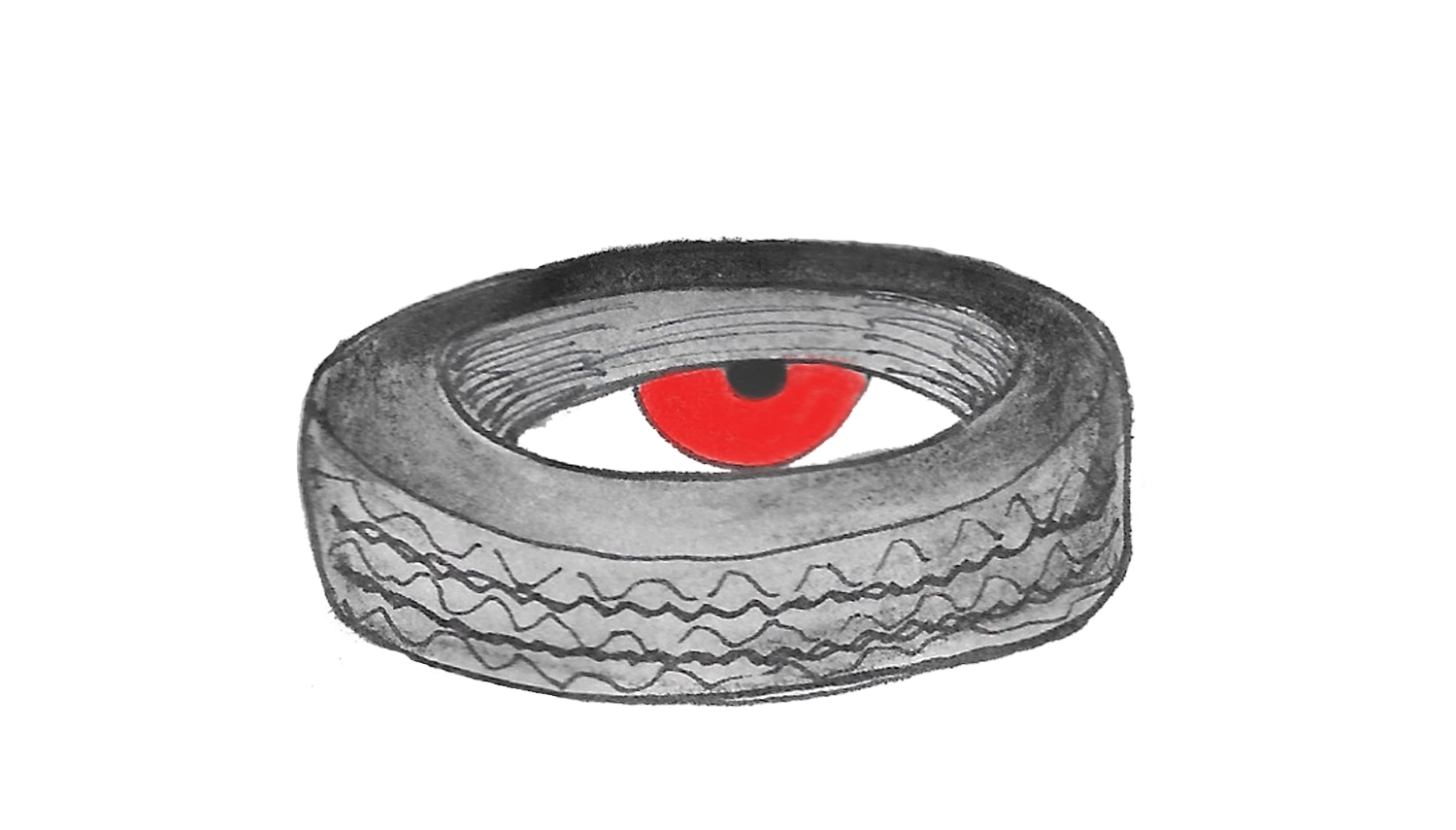The haunted history of indie horror
Written By: Josh Winston, Art By: Amber Kirlew, Design By: Angel Nelson
[dropcap]H[/dropcap]orror films are an essential part of any Halloween tradition. Films that bring us face-to-face with ruthless serial killers or demonic infestations allow us to experience fear and terror, but at a distance that is manageable and fun. They’re scary, but not too scary.
Horror films let us safely explore the darker side of humanity, the seedy underbelly of the human psyche that comes alive when the sun sets and random acts of terror jolt us awake from the mundane sleepwalking of everyday life. Darkness emerges and with it, a whole universe of dark and dreadful figures that haunt the movie screen and sometimes our imaginations long after the film has ended.
The haunted history of indie horror
Written By: Josh Winston Art By: Amber Kirlew Design By: Angel Nelson
[dropcap]H[/dropcap]orror films are an essential part of any Halloween tradition. Films that bring us face-to-face with ruthless serial killers or demonic infestations allow us to experience fear and terror, but at a distance that is manageable and fun. They’re scary, but not too scary.
Horror films let us safely explore the darker side of humanity, the seedy underbelly of the human psyche that comes alive when the sun sets and random acts of terror jolt us awake from the mundane sleepwalking of everyday life. Darkness emerges and with it, a whole universe of dark and dreadful figures that haunt the movie screen and sometimes our imaginations long after the film has ended.
THE ORIGINS OF INDIE HORROR
Until relatively recently, horror films have always occupied a niche position on the margins of mainstream cinema. Because of this, they’ve historically had the freedom to tackle gruesome or otherwise unsettling subject matter.
This thematic freedom has allowed the horror genre to split, crack and rupture into a constellation of subgenres. From slashers to ghost stories, mockumentaries, to comedy horror, the genre has proved itself to be fertile ground for experimentation.
Specifically, indie or low-budget horror cinema has proven itself to be particularly illustrative of horrors’ commitment to experimentation and shock value. Low-budget horror cinema in the U.S. emerged from mainstream horror in an attempt to economize the often financially bloated and excessive mainstream film productions.
Since the 1910s the dominant mode of film production in America has been the studio system, a system characterized by excess and inefficiency that would dominate cinema until its collapse in the 1960s when factors such as the paramount decision and the rise of independent cinema began to erode the dominance of major Hollywood studios.
With that collapse, many film productions were only able to continue as independent and financially conservative in order to account for the loss of such a large filmic system. These films were characterized by their shoestring budgets, small crews and attempts to clearly define themselves against mainstream narratives.
According to Diana Anselmo Sequeira, a film and media professor at Georgia State, the 1960s were an important time for new types of experimental cinema.
“The1960s are also important not just because of cultural revolution but also because of the emergence of porn and porn becoming much more commodified and visible,” she said.
Anselmo Sequeira attributes indie cinema’s emergence to the proliferation and mainstream adoption of porn in the 1960s and 70s.
“Horror of the 60s and 70s is going to borrow a lot from that spectacular, very bodily, physical, gushing kind of genre,” she said.
Horror subgenres, such as the slasher film, closely mirror porn’s production with its interest in visualizing the transgression of bodily boundaries and its dedication to penetration, whether by weapons or by more phallic apparatuses.
THE ORIGINS OF INDIE HORROR
Until relatively recently, horror films have always occupied a niche position on the margins of mainstream cinema. Because of this, they’ve historically had the freedom to tackle gruesome or otherwise unsettling subject matter.
This thematic freedom has allowed the horror genre to split, crack and rupture into a constellation of subgenres. From slashers to ghost stories, mockumentaries, to comedy horror, the genre has proved itself to be fertile ground for experimentation.
Specifically, indie or low-budget horror cinema has proven itself to be particularly illustrative of horrors’ commitment to experimentation and shock value. Low-budget horror cinema in the U.S. emerged from mainstream horror in an attempt to economize the often financially bloated and excessive mainstream film productions.
Since the 1910s the dominant mode of film production in America has been the studio system, a system characterized by excess and inefficiency that would dominate cinema until its collapse in the 1960s when factors such as the paramount decision and the rise of independent cinema began to erode the dominance of major Hollywood studios.
With that collapse, many film productions were only able to continue as independent and financially conservative in order to account for the loss of such a large filmic system. These films were characterized by their shoestring budgets, small crews and attempts to clearly define themselves against mainstream narratives.
According to Diana Anselmo Sequeira, a film and media professor at Georgia State, the 1960s were an important time for new types of experimental cinema.
“The1960s are also important not just because of cultural revolution but also because of the emergence of porn and porn becoming much more commodified and visible,” she said.
Anselmo Sequeira attributes indie cinema’s emergence to the proliferation and mainstream adoption of porn in the 1960s and 70s.
“Horror of the 60s and 70s is going to borrow a lot from that spectacular, very bodily, physical, gushing kind of genre,” she said.
Horror subgenres, such as the slasher film, closely mirror porn’s production with its interest in visualizing the transgression of bodily boundaries and its dedication to penetration, whether by weapons or by more phallic apparatuses.
“A new standard for slasher films”

This is where films such as “The Texas Chainsaw Massacre” emerge with all of their gory glory. In October of 1974, “The Texas Chainsaw Massacre” premiered to a mixed global reception. Many theaters outright banned showings of the films due to its violent and gory subject matter.
The story follows a group of friends who eventually become food for a family of cannibals and is loosely based on the crimes of serial-killer Ed Gein. The film was made on a shoestring budget in central Texas by Tobe Hooper with a cast of previously unknown actors.
“The Texas Chainsaw Massacre” went on to become enormously popular, grossing an estimated 30 million dollars at the domestic box office. In addition to a successful theatrical run, the film also redefined the slasher genre and is regarded as one of the most influential horror films of all time.
Writing for TIME, Richard Soglin said “‘The Texas Chainsaw Massacre’ set a new standard for slasher films.” The film is credited with originating the figure of the hulking faceless killer and the use of power tools as murder weapons.
“The Texas Chainsaw Massacre” was famous for how it transformed the American conception of what a horror film could be. But it was also famous for what it revealed about American life in general. For many critics and theorists, the film represents a horror filled critique of capitalism and the American industrial force.
According to theorist Robin Wood, the killer Leatherface and his cannibal family can be seen as victims of industrial capitalism when their jobs as slaughterhouse workers became overshadowed by technological advances.
Even today, the film still holds its own up against newer titles.
“It’s still quite a scary film by today’s standards even if it was made in the seventies ,” Georgia State student Natalie Cullen said.
“A new standard for slasher films”
This is where films such as “The Texas Chainsaw Massacre” emerge with all of their gory glory. In October of 1974, “The Texas Chainsaw Massacre” premiered to a mixed global reception. Many theaters outright banned showings of the films due to its violent and gory subject matter.
The story follows a group of friends who eventually become food for a family of cannibals and is loosely based on the crimes of serial-killer Ed Gein. The film was made on a shoestring budget in central Texas by Tobe Hooper with a cast of previously unknown actors.
“The Texas Chainsaw Massacre” went on to become enormously popular, grossing an estimated 30 million dollars at the domestic box office. In addition to a successful theatrical run, the film also redefined the slasher genre and is regarded as one of the most influential horror films of all time.
Writing for TIME, Richard Soglin said “‘The Texas Chainsaw Massacre’ set a new standard for slasher films.” The film is credited with originating the figure of the hulking faceless killer and the use of power tools as murder weapons.
“The Texas Chainsaw Massacre” was famous for how it transformed the American conception of what a horror film could be. But it was also famous for what it revealed about American life in general. For many critics and theorists, the film represents a horror filled critique of capitalism and the American industrial force.
According to theorist Robin Wood, the killer Leatherface and his cannibal family can be seen as victims of industrial capitalism when their jobs as slaughterhouse workers became overshadowed by technological advances.
Even today, the film still holds its own up against newer titles.
“It’s still quite a scary film by today’s standards even if it was made in the seventies ,” Georgia State student Natalie Cullen said.
“The Texas Chainsaw Massacre” was also noted for its documentary-style camera work. Another film that utilizes this specific style of horror cinematography is “The Blair Witch Project” which had a monumental impact on the indie horror genre.
“The Blair Witch Project” is a 1999 horror film about a group of student filmmakers who venture into the Black Hills of Maryland to make a film about a local legend colloquially known as the Blair Witch.
The low-budget film had a successful marketing campaign, pitching the film as “found footage” of the missing video team a year after the events of film were said to have taken place.
“The Blair Witch Project” premiered at Sundance in 1999 with a promotional marketing campaign alleging that the actors of the film were either “missing” or “deceased.” It was also one of the first theatrically released films to be marketed primarily through the internet with fake police reports and an IMDB page that listed the actors as dead or missing.
The film had an especially large impact on the horror genre with many films such as “Paranormal Activity,” “Cloverfield,” “The last Exorcism” and countless others borrowing from its mockumentary-style cinematography and narrative. It would also go on to become one of the highest grossing indie films of all time with a box office of $248.6 million.
Documentary-
style
cinematography
Documentary-
style
cinematography
“The Texas Chainsaw Massacre” was also noted for its documentary-style camera work. Another film that utilizes this specific style of horror cinematography is “The Blair Witch Project” which had a monumental impact on the indie horror genre.
“The Blair Witch Project” is a 1999 horror film about a group of student filmmakers who venture into the Black Hills of Maryland to make a film about a local legend colloquially known as the Blair Witch.
The low-budget film had a successful marketing campaign, pitching the film as “found footage” of the missing video team a year after the events of film were said to have taken place.
“The Blair Witch Project” premiered at Sundance in 1999 with a promotional marketing campaign alleging that the actors of the film were either “missing” or “deceased.” It was also one of the first theatrically released films to be marketed primarily through the internet with fake police reports and an IMDB page that listed the actors as dead or missing.
The film had an especially large impact on the horror genre with many films such as “Paranormal Activity,” “Cloverfield,” “The last Exorcism” and countless others borrowing from its mockumentary-style cinematography and narrative. It would also go on to become one of the highest grossing indie films of all time with a box office of $248.6 million.
Popularizing
indie cinema

These influential films have also served as inspiration for a whole new generation of independent cinema. The 2014 film “It Follows” debuted at Cannes film festival and was purchased by RADiUS-TWC for distribution.
The film follows Oakland University student Jay as she encounters a malevolent entity that follows its victims to eventually kill them. Because of the parasitic nature of its supernatural villain, the film is sometime interpreted as a cautionary tale about the spread of HIV or other sexually transmitted infections.
The film opened to a limited release in March of 2015 and earned $163,453 making it the highest earning limited release of that year.
Popularizing
indie cinema
These influential films have also served as inspiration for a whole new generation of independent cinema. The 2014 film “It Follows” debuted at Cannes film festival and was purchased by RADiUS-TWC for distribution.
The film follows Oakland University student Jay as she encounters a malevolent entity that follows its victims to eventually kill them. Because of the parasitic nature of its supernatural villain, the film is sometime interpreted as a cautionary tale about the spread of HIV or other sexually transmitted infections.
The film opened to a limited release in March of 2015 and earned $163,453 making it the highest earning limited release of that year.
Borrowing from the same tradition of “The Blair Witch Project,” the Roger Eggers film “The Witch” tells the story of a New England separatist community and their supernatural encounter with either an evil wiccan force, or their overactive imaginations.
The movie’s initial 2016 theatrical release gave way to polarized criticism with some applauding the films ambient sense of puritanical dread while others found it downright boring. Katy Waldman writing for Slate Magazine, said “‘The Witch’ makes the mundane sinister…Intense realism, almost closer to VR than cinema, envelops viewers in a desolate colonial winter.”
However, what remains uncontested about “The Witch” is its successful theatrical run. On Rotten Tomatoes it has an approval rating of 91 percent and a box office sale of $25.1 million in the U.S. and $40.4 million globally.
Polarizing
critics

Polarizing
critics
Borrowing from the same tradition of “The Blair Witch Project,” the Roger Eggers film “The Witch” tells the story of a New England separatist community and their supernatural encounter with either an evil wiccan force, or their overactive imaginations.
The movie’s initial 2016 theatrical release gave way to polarized criticism with some applauding the films ambient sense of puritanical dread while others found it downright boring. Katy Waldman writing for Slate Magazine, said “‘The Witch’ makes the mundane sinister…Intense realism, almost closer to VR than cinema, envelops viewers in a desolate colonial winter.”
However, what remains uncontested about “The Witch” is its successful theatrical run. On Rotten Tomatoes it has an approval rating of 91 percent and a box office sale of $25.1 million in the U.S. and $40.4 million globally.
Spinning
into absurdity

“Rubber” tells the unlikely story of a rubber car tire named Robert that comes to life, gains psychic powers and embarks on a killing spree in a California dessert. Robert comes to life, rolling along until he gradually encounters more and more people. With each kill, his powers grow in strength until he can eventually blow people up with his telekinetic abilities.
The film represents a rare and imaginative entry into the indie horror cannon and offers a well balanced comedic and horrific narrative. IndieWire said it was “one of the more bizarre experiments with genre in quite some time.” Rubber was shown at Cannes in May of 2010 and was picked up for U.S. distribution by Magnet Releasing.
“Rubber” was also a polarizing production with some critics deeming it imaginative while others regarded it as pretentious and heavy handed. Ruthlessreviews.com described it as a “steaming load of rubbish masquerading as a movie,” while The New York Times called it witty.
In any case, “Rubber” highlights how indie cinema functions best. When not beholden to wide audience appeal or box office success, indie films are able to truly experiment with their genres and produce something that, for better or for worse, makes its viewers think.
Spinning
into absurdity
“Rubber” tells the unlikely story of a rubber car tire named Robert that comes to life, gains psychic powers and embarks on a killing spree in a California dessert. Robert comes to life, rolling along until he gradually encounters more and more people. With each kill, his powers grow in strength until he can eventually blow people up with his telekinetic abilities.
The film represents a rare and imaginative entry into the indie horror cannon and offers a well balanced comedic and horrific narrative. IndieWire said it was “one of the more bizarre experiments with genre in quite some time.” Rubber was shown at Cannes in May of 2010 and was picked up for U.S. distribution by Magnet Releasing.
“Rubber” was also a polarizing production with some critics deeming it imaginative while others regarded it as pretentious and heavy handed. Ruthlessreviews.com described it as a “steaming load of rubbish masquerading as a movie,” while The New York Times called it witty.
In any case, “Rubber” highlights how indie cinema functions best. When not beholden to wide audience appeal or box office success, indie films are able to truly experiment with their genres and produce something that, for better or for worse, makes its viewers think.
